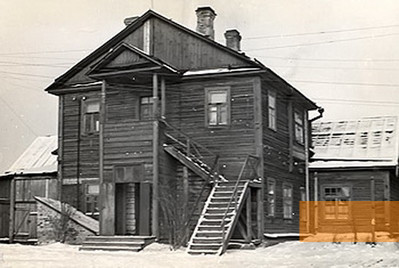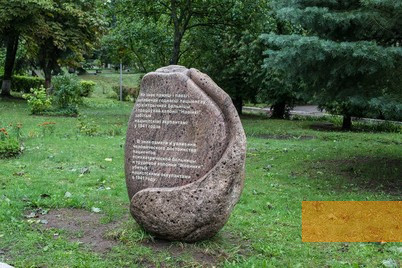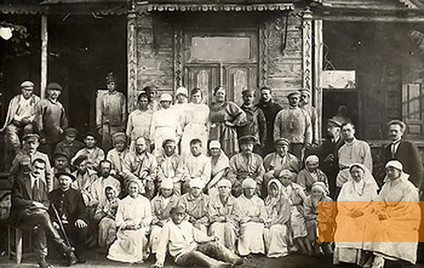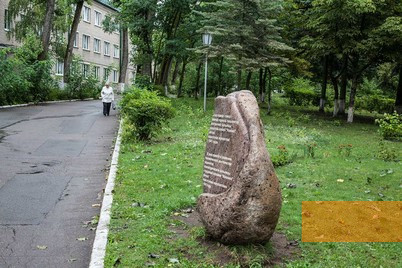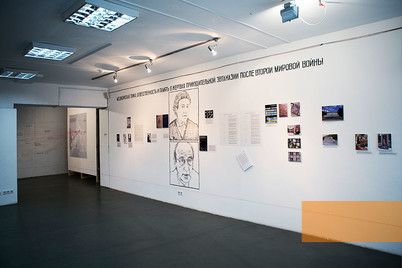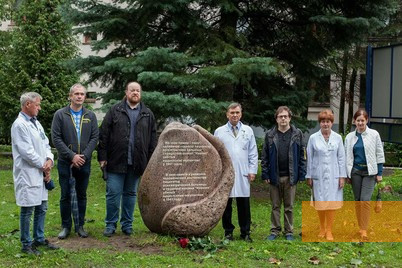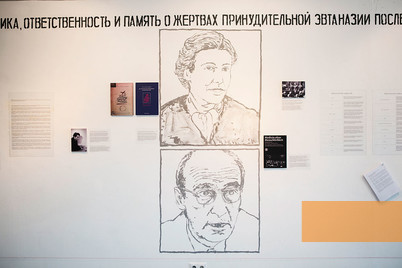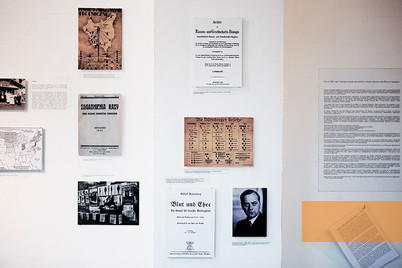Since 2017, a memorial stone on the premises of the psychiatric hospital Novinki in Minsk remembers the patients murdered by German occupying forces.
In the context of the »Euthanasia« program, some 70.000 people with disabilities and mental illness were murdered in Germany until the killings were halted in August 1941. But even after the official end, the killing of patients continued not only in Germany but also in the occupied territories. Especially in occupied Eastern Europe the patients of entire institutions were murdered in a systematic manner.
The German Wehrmacht conquered the Belarusian capital Minsk just a few days after its attack on the Soviet Union. In Belarus, one of the most brutal occupying regimes was established and during the foloowing three years, about a quarter of the population perished.
Patients of psychiatric institutions were systematically murdered in the occupied Soviet territories. Arthur Nebe, commander of Einsatzgruppe (mobile killing unit) B, which was deployed in Belarus in order to murder political opponents and Jews, conferred with Albert Widmann, one of the main perpetrators of the »Euthanasia« program in the German Reich, about the subject. Widmann traveled to Minsk in the autumn of 1941 to prepare the murders of patients. In September 1941, Nebe's men murdered patients of the local institution in Mogilev with car exhaust fumes. Afterwards they murdered the patients of the Minsk psychiatric hospital Novinki in a nearby forest with explosives. However, as this method proved to be impractical for the perpetrators, another group of more than 100 patients were killed with poison gas on September 18, 1941 in a bathhouse of the institution. Few days later another 80 patients of Novinki, among them all Jewish patients, were shot. Some days later psychiatric patients of another Minsk hospital were murdered.
The German Wehrmacht conquered the Belarusian capital Minsk just a few days after its attack on the Soviet Union. In Belarus, one of the most brutal occupying regimes was established and during the foloowing three years, about a quarter of the population perished.
Patients of psychiatric institutions were systematically murdered in the occupied Soviet territories. Arthur Nebe, commander of Einsatzgruppe (mobile killing unit) B, which was deployed in Belarus in order to murder political opponents and Jews, conferred with Albert Widmann, one of the main perpetrators of the »Euthanasia« program in the German Reich, about the subject. Widmann traveled to Minsk in the autumn of 1941 to prepare the murders of patients. In September 1941, Nebe's men murdered patients of the local institution in Mogilev with car exhaust fumes. Afterwards they murdered the patients of the Minsk psychiatric hospital Novinki in a nearby forest with explosives. However, as this method proved to be impractical for the perpetrators, another group of more than 100 patients were killed with poison gas on September 18, 1941 in a bathhouse of the institution. Few days later another 80 patients of Novinki, among them all Jewish patients, were shot. Some days later psychiatric patients of another Minsk hospital were murdered.
In 1941 about 200 patients were murdered on the site of the psychiatric hospital Novinki in Minsk. The exact number of patients murdered during the German occupation in Minsk or throughout Belarus is unknown.
In the Soviet Union and during the first two decades of Belarusian independence the murder of patients during the German occupation had not been a public issue. It is primarily doctors, independent historians and civil society initiatives who have recently addressed the issue. In December 2016, an exhibition entitled »From Dehumanisation to Murder: The Fate of Psychiatric Patients in Belarus 1941-1944« was shown at an art gallery in Minsk. It was compiled jointly by Belarusian and German historians, doctors and artists and funded by the foundation »Remembrance, Responsibility and Future«. Less than a year later a memorial stone commemorating the institution's murdered patients was inaugurated on the site of the Novinki hospital. The inscription in Belarusian and Russian reads: »In memory and in respect of the human dignity of the patients of the psychiatric hospital and the labour colony Novinki who were murdered by the Nazi-Occupants in 1941«.
Outside of Minsk, there is only one other memorial in Belarus remembering the murdered patients, a statue in Mogilev.
Outside of Minsk, there is only one other memorial in Belarus remembering the murdered patients, a statue in Mogilev.
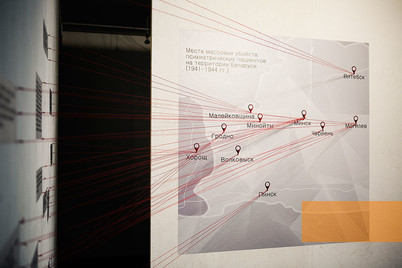
Minsk, 2016, View of the exhibition on patient murders in occupied Belarus, ECLAB, Minsk, 2017, Memorial stone, Aleksandra Kononchenko
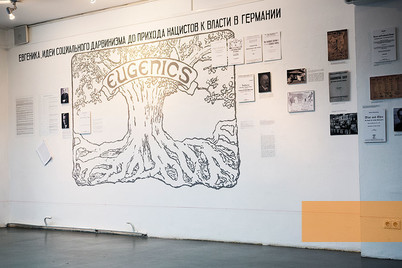
Minsk, 2016, View of the exhibition on the murder of patients in occupied Belarus, ECLAB, Aleksandra Kononchenko
- Name
- мемориальный знак в память о пациентах психиатрической больницы, погибших в годы Великой Отечественной войны
- Address
-
Davhinavski Trakt 152
220053 Minsk - Phone
- +375(17) 289 80 48
- Fax
- +375(17) 289 80 48
- Web
- http://mentalhealth.by/
- rkpb@mail.belpak.by
- Open
- The memorial is accessible at all times.


